What in the Sam Hill? It's Stonehenge!
Or is it? Stonehenge, sculpture, and Parisian style -- in the middle of nowhere
What do you get when you take a wild, windy natural area along the Columbia River and merge it with a bold artistic vision? Let’s head to tiny Maryhill, Washington, where in the early 1900s, an unstoppable man named Sam Hill arrived. Thanks to Sam’s grandiose dreams, we can now visit Amesbury, England; Paris, France; Romania; and other exotic locales—without ever leaving the grasslands along the Columbia.
Perhaps you’ve heard the expression, “What in the Sam Hill?”
The Pacific Northwest had a real-life Samuel Hill (b. 1857, d. 1931), an eccentric businessman who served as a lawyer, railroad executive, world traveler, and bond-seller. During Sam’s travels, he met and befriended Queen Marie of Romania as well as the famous dancer-actress, Loïe Fuller (stage name La Loïe).
Rather fortuitously, Loïe the dancer knew the French sculptor Rodin.
And so the crazy story of Maryhill, Washington begins…
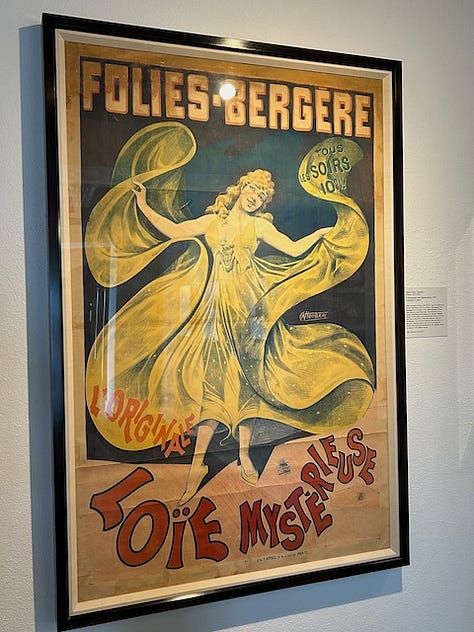
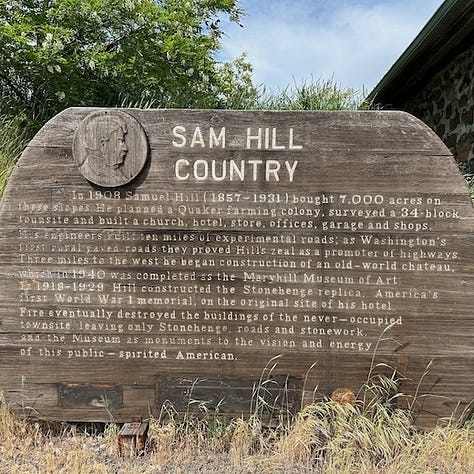
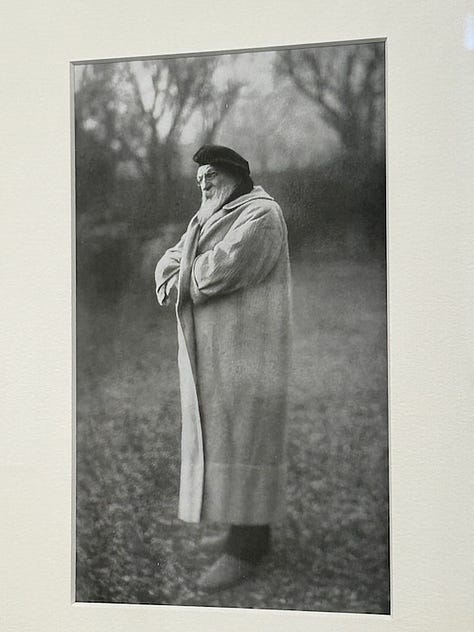
To be honest, the Pacific Northwest’s Samuel Hill wasn’t the inspiration for the expression “What in the Sam Hill?” He was born 25 years after it was coined.1
But he certainly could be. Because after you read about how Sam brought Stonehenge, paintings, sculpture, indigenous art, Parisian style—and the only Rodin “The Thinker” mini-plaster cast in existence—to a remote area of eastern Washington, you might find yourself asking, “What in the Sam Hill was Sam thinking?”
Case in point: Here’s the drive to reach Maryhill:
An Eccentric Visionary
During his 73 years of life, Sam Hill had many great successes—as well as setbacks. He was a true visionary, offering bold ideas for his time—and he’ll be remembered in the Pacific Northwest for four key accomplishments:
He promoted “modern” paved roads, which led to the Columbia River Highway being built.
He was instrumental in getting the giant Peace Arch between the U.S. and Canada installed at the Blaine-Surrey border. (Per Wikipedia, he managed construction until the arch was dedicated in 1921.)
He established the Maryhill Museum of Art, a small museum overlooking the Columbia River in Washington.
And he built a life-size replica of Stonehenge on a cliff nearby. Stonehenge! Yes, really.
We recently spent a day exploring the area, visiting “Stonehenge of the West” and the Maryhill Museum of Art. Wow. You’ve got to see these places to believe them.
Maryhill’s Stonehenge
Let’s talk about the crazy monument first. Construction for Sam’s Stonehenge began in 1918, and it was completed in 1929.
Apparently, Sam was under the impression that the real Stonehenge had been used for human sacrifice.2 So when he copied the Stonehenge design, he—a Quaker—decided his monument would be a war memorial to recognize the sacrifice of local soldiers who’d been killed in World War I. It’s practically the same thing, right?
Sam decided to build his Stonehenge on a cliff above the Columbia River, using a sliver of the 7,000 acres he’d purchased to make a Quaker farming community. The community later burned down (see sign in photo trio above)—but recreate Stonehenge he did, down to the details. Although Sam’s structure was crafted from cement, not stone, the altar was designed to greet sunrise on the summer solstice.
Sam Hill loved his Stonehenge so much he chose to be buried there in a crypt. Unfortunately, his crypt disintegrated (1931 was a long time ago) and they had to move his body to another location at the Stonehenge site.
But Sam wasn’t only interested in ancient monuments. He was also a patron of the arts—and interesting women.3
The Maryhill Museum of Art
A few miles from Stonehenge sits Sam Hill’s former mansion, now the Maryhill Museum of Art—which opened to the public in 1940. From a distance, the most striking thing about this museum is its curious location.
Maryhill isn’t really in the middle of nowhere—it’s less than two hours from Portland, and there are towns nearby, including Goldendale, Washington (population 3,487) and Biggs Junction, Oregon (population 26), across the river.4 But it sure feels a long way from the big city….
Driving down Maryhill’s elegant, curved driveway to find a manicured green lawn and an early 1900s mansion felt a bit surreal, especially when the surrounding area is arid landscape, home to more wind turbines and vineyards than people.
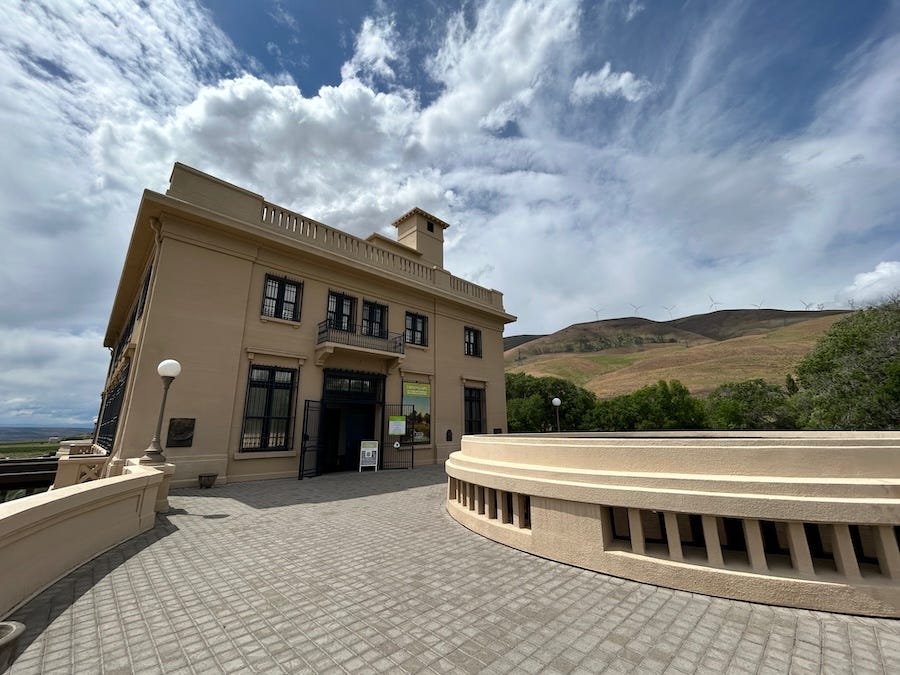
And when we entered the mansion to discover gilded thrones donated by Romanian royalty, a vast collection of Rodin sculptures, an array of indigenous art, and displays about Parisian fashion design…it was like walking into another world.
The Four Founders
Maryhill’s collection is extremely eclectic. That’s because four different people were involved in the museum’s creation5:
There’s Sam Hill, of course. He donated the building, an unfinished mansion that was intended to be his family’s home. (Maryhill is named after Sam’s wife Marie/Marnie/Mary and their daughter Mary. Curiously, his wife’s maiden name was also Hill, meaning she became Mary Hill Hill.6) Sam used his connections (see the ladies below) to build the initial museum collection. And, as a proponent of “good, modern highways,” he built several roads so people could reach Maryhill.
Queen Marie of Romania donated many pieces of royal art and attended the museum’s original dedication in 1926 with her daughters, before it opened to the public. Having a real queen visit this rural area was quite the event!
Dancer Loïe Fuller knew the sculptor Rodin from her dancing days and convinced him to donate more than 80 of his own works, as well as selections from his personal art collection; 7
and Alma de Bretteville Spreckels, the wife of a sugar magnate, took over the museum development after Sam’s death in 1931.
From 1917 to 1940, these founders turned the kernel of an idea—“Hey, your unfinished mansion could be an art museum!”—into a cultural masterpiece. Here are some glimpses into Maryhill’s current exhibits.
The museum has a vast collection of Rodin sculptures, including:

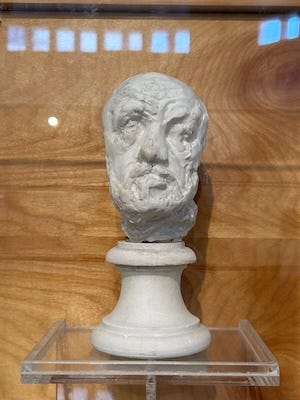
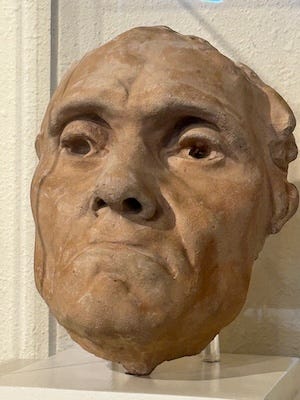
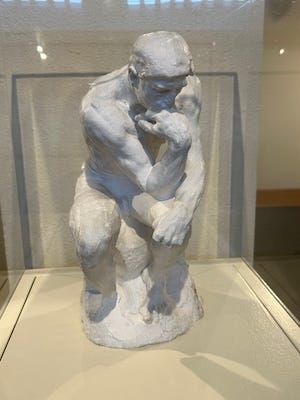
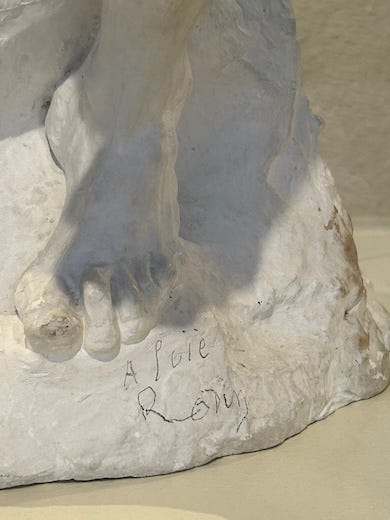
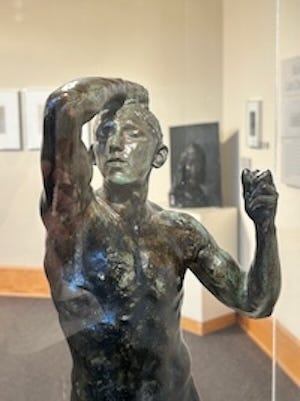
Multiple displays offer indigenous art from the Northwest, Alaska, and the Plains, including beaded artwork from local Yakama tribes.
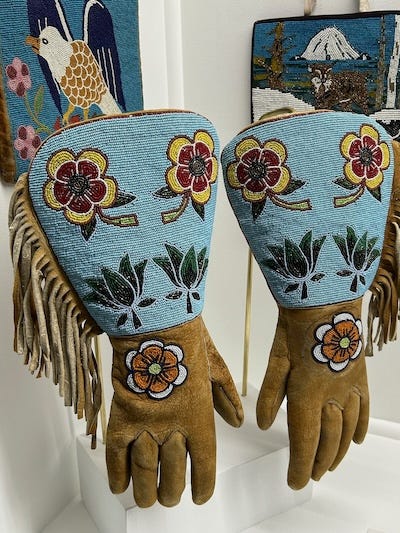
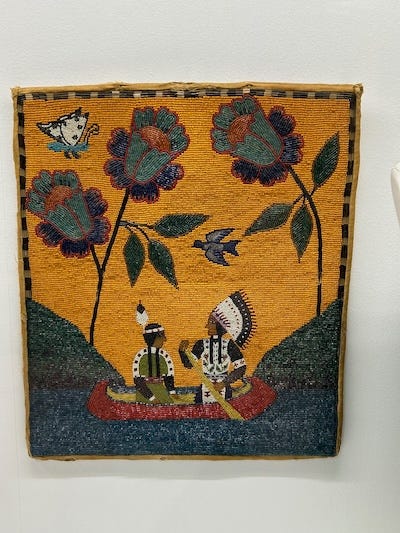
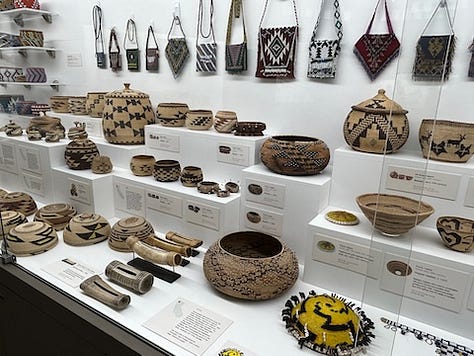
A hallway showcases chess sets from around the world:
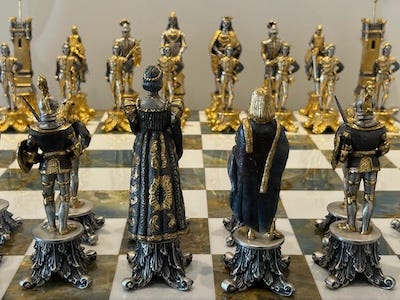
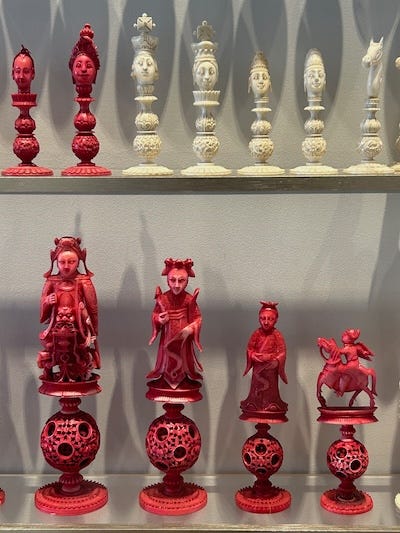
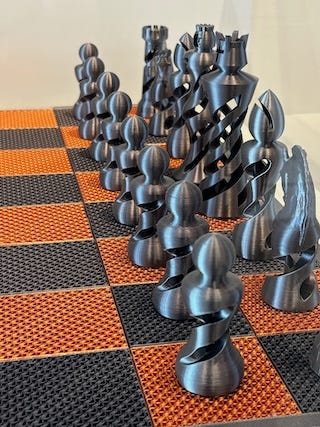
And Maryhill has an outdoor sculpture garden:

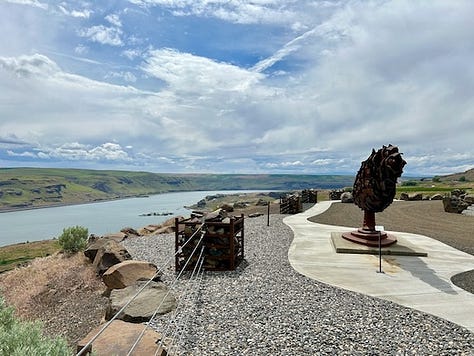
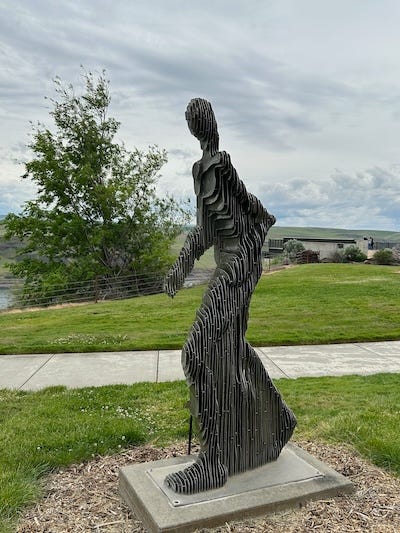
The Maryhill Museum also has several rooms of paintings—including the requisite gilt-framed paintings of sheep that every American museum seems to collect—and paintings by local artists. But because Maryhill was built as a private home, it has some intriguing off-limits spaces:
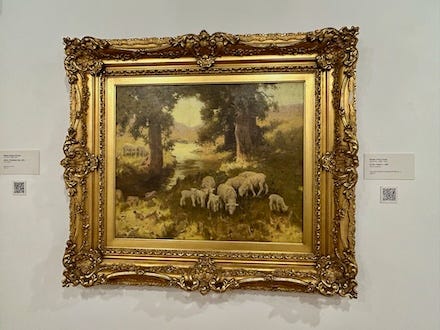
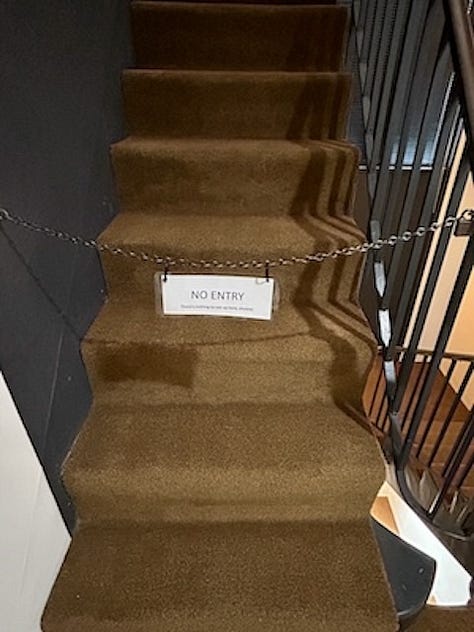
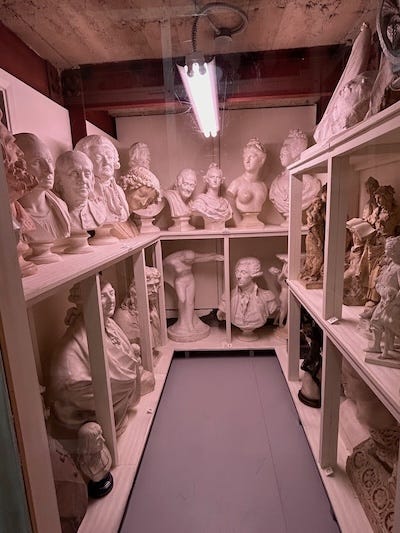
Little do they know: A sign on the stairs saying, “No entry. There’s nothing up here to see, anyway” is like catnip to a mystery writer. (I resisted temptation on the stairs—and the room of busts was visible, but cordoned off with a rope.)
Paris in the Wild
Oh, and about that Parisian fashion? The Théâtre de la Mode exhibit was one of my favorites at Maryhill.
Apparently, after World War II, the fashion houses in Paris wanted to get back to designing pretty clothes—but the war economy had hit hard and fabric was scarce. So in 1945, the designers got the idea to create doll-size manikins to display their clothing—with each manikin being only 27” tall. That way, customers could view and shop for the latest styles without the designers needing so much fabric.8
Check out the post-war fashions on these miniature models:

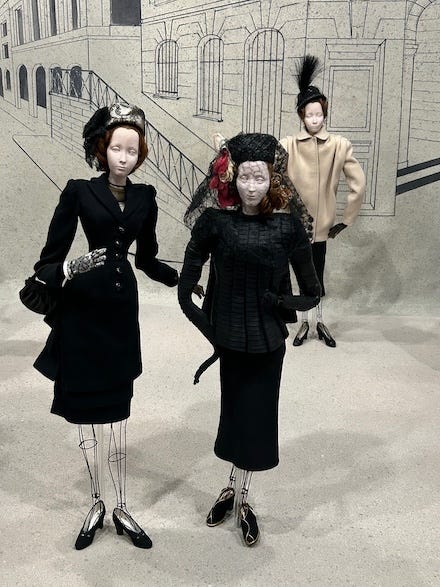
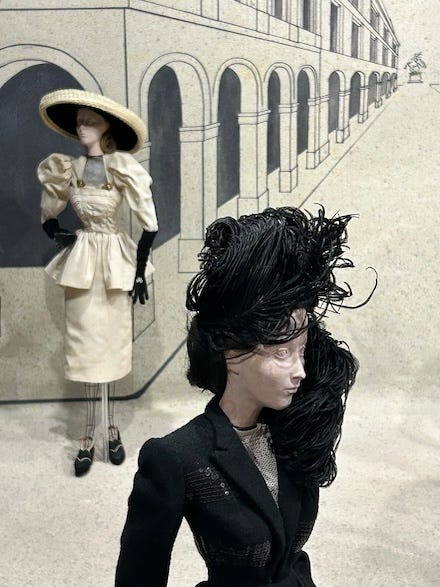
One designer really embraced the war theme, placing his models in this apocalyptic setting:
According to the museum’s website, they have nine such displays — once featured at the Louvre in Paris — and they rotate them, showing three at a time.
Well Worth a Visit
The Maryhill Museum is relatively small, which makes its international treasures even more surprising. The admission price ($23) isn’t cheap, but for $100 you can get a household membership for two (plus kids or grandkids) and return as often as you’d like for one year. We decided to become members. It feels good to be Patrons of the Arts — and support people’s unique, innovative, artistic ideas.
But what in the Sam Hill was Sam thinking?
Personally, I’m glad he followed through with his rather zany vision. Perhaps there’s a lesson in his life:
Whatever your creative plans may entail, don’t let the naysayers stop you!
I sincerely appreciate your support of my writing. If you enjoyed this post, please feel free to Like it, leave a comment below, or share it with family and friends. Thank you!
We’ll be back in June, topic TBD.
All photos and text in this post are by Christine Finlayson, copyright 2025.
https://www.wweek.com/news/dr-know/2022/02/05/does-the-term-what-in-the-sam-hill-originate-with-oregons-sam-hill/
https://en.wikipedia.org/wiki/Maryhill_Stonehenge
According to Wikipedia, Sam Hill was fond of the ladies—and after his wife abandoned him, he ended up having three more children with three different women.
See https://worldpopulationreview.com/us-cities. Maryhill itself is an unincorporated community, with the census showing a population of 55 in 2020.
https://www.maryhillmuseum.org/inside/mission-and-history
https://en.wikipedia.org/wiki/Samuel_Hill
See Maryhill, Footnote 5.
With credit to the displays and accompanying text found at Maryhill Museum.

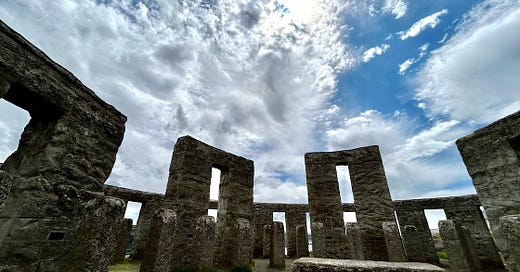



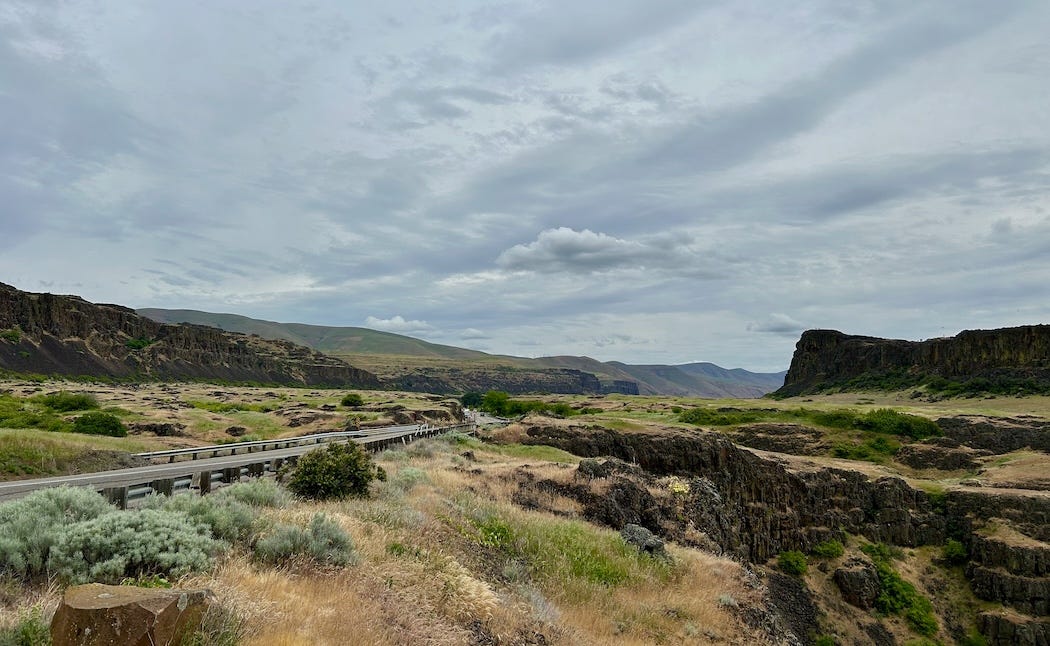

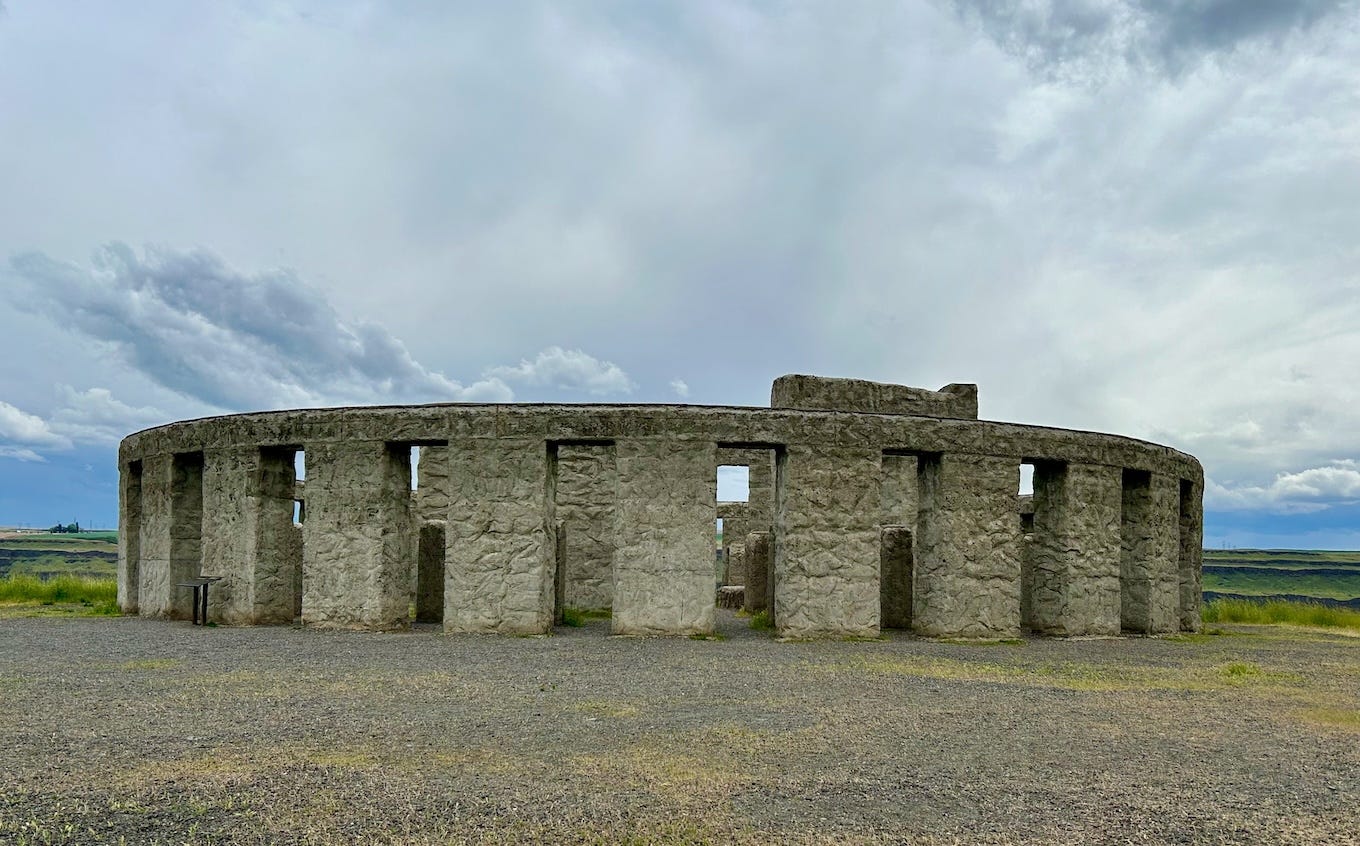
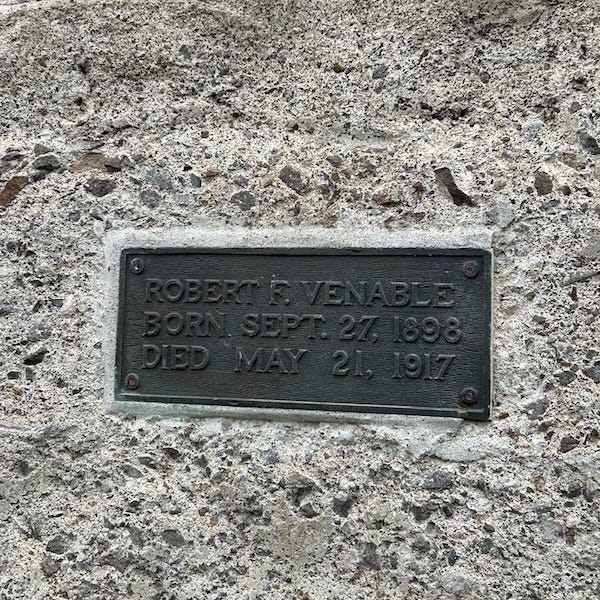
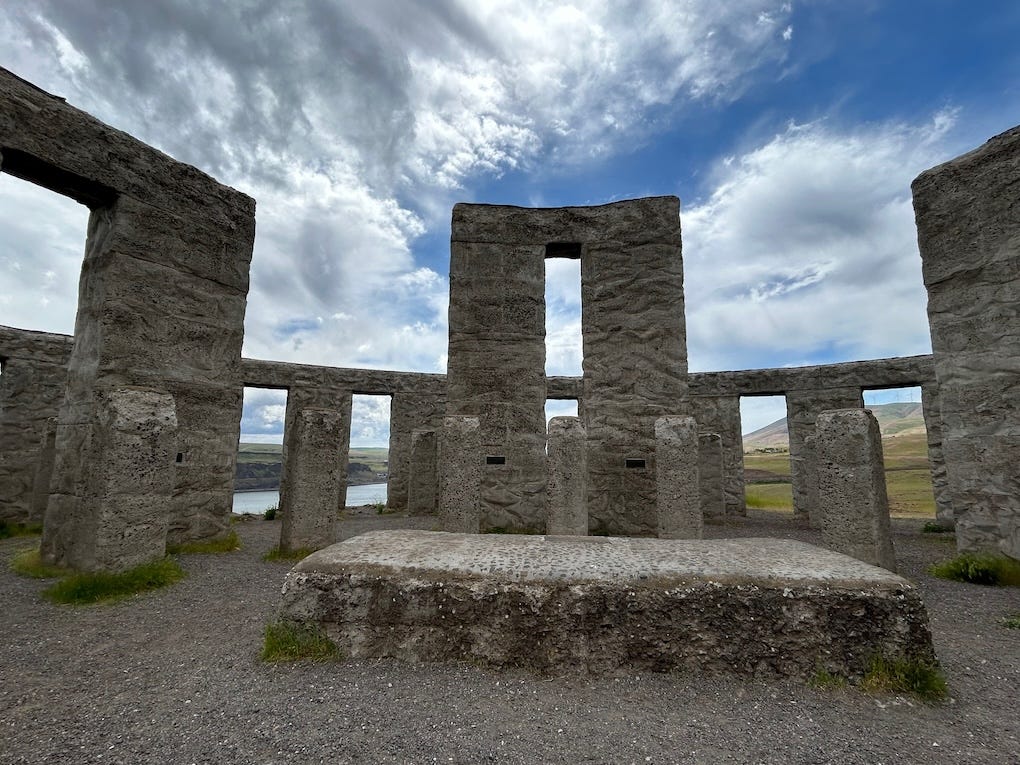


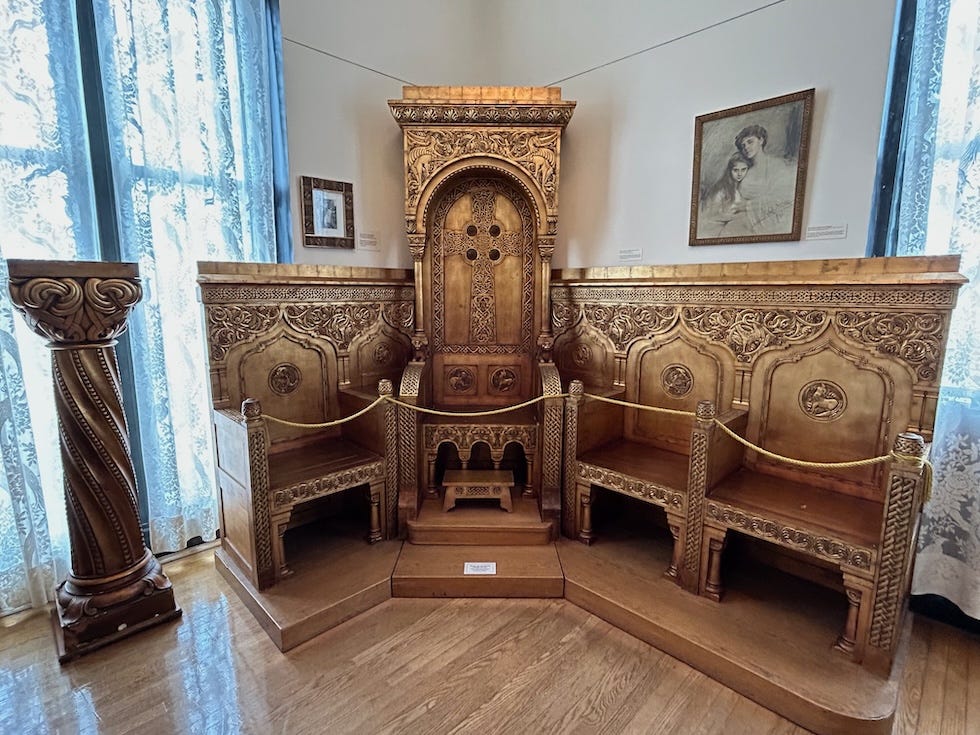


You really pack a lot of info into your posts! We’re always on our way to somewhere else when we roll through. We have stopped at Stonehenge. We’ll have to make time for the museum next time!
Fascinating! Did not know there was a Stonehenge in Oregon! I like the chess sets.